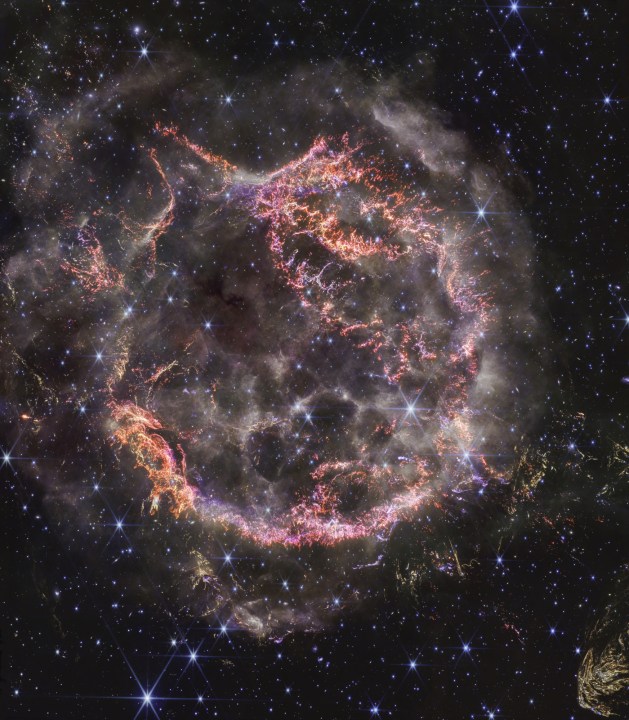When massive stars run out of fuel and come to the ends of their lives, their final phase can be a massive explosion called a supernova. Although the bright flash of light from these events quickly fades, other effects are longer-lasting. As the shockwaves from these explosions travel out into space and interact with nearby dust and gas, they can sculpt beautiful objects called supernova remnants.
One such supernova remnant, Cassiopeia A, or Cas A, was recently imaged using the James Webb Space Telescope’s NIRCam instrument. Located 11,000 light-years away in the constellation of Cassiopeia, it is thought to be a star that exploded 340 years ago (as seen from Earth) and it is now one of the brightest radio objects in the sky. This view shows the shell of material thrown out by the explosion interacting with the gas that the massive star gave off in its last phases of life.

“With NIRCam’s resolution, we can now see how the dying star absolutely shattered when it exploded, leaving filaments akin to tiny shards of glass behind,” said lead researcher Danny Milisavljevic of Purdue University in a statement. “It’s really unbelievable after all these years studying Cas A to now resolve those details, which are providing us with transformational insight into how this star exploded.”
Webb has observed Cas A before, using its MIRI instrument. The previous observations taken by MIRI were in the mid-infrared wavelength, which looks more colorful and shows features like the warm dust surrounding the remnant, making up its outer shell, lit up in oranges and red.

This recent observation, on the other hand, was observed using NIRCam in the near-infrared wavelength. NIRCam has higher resolution than MIRI, so the image appears somewhat sharper, and it also picks out different details. The dust that glows so brightly in the mid-infrared is barely visible in the near-infrared, appearing as smoke-like wisps. Instead, the NIRCam image shows the inner shell of the remnant more clearly, which helps researchers to learn about how the star shattered when it exploded.
Editors' Recommendations
- James Webb observes extremely hot exoplanet with 5,000 mph winds
- James Webb images capture the galactic winds of newborn stars
- The expansion rate of the universe still has scientists baffled
- This famous supernova remnant is hiding a secret
- James Webb photographs two potential exoplanets orbiting white dwarfs



